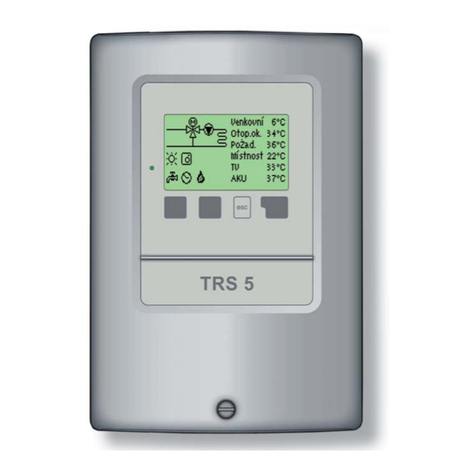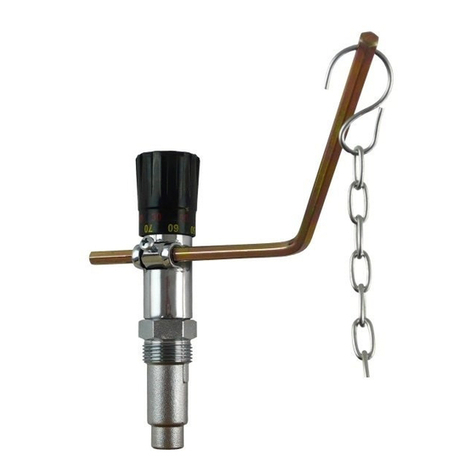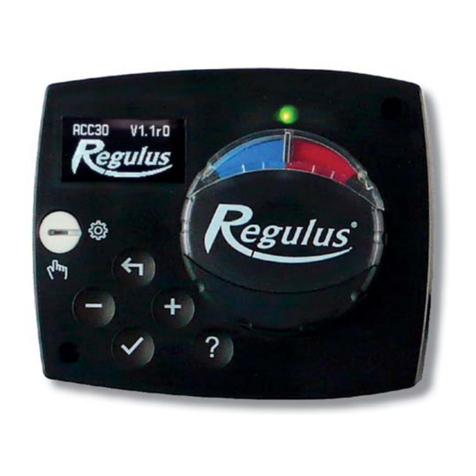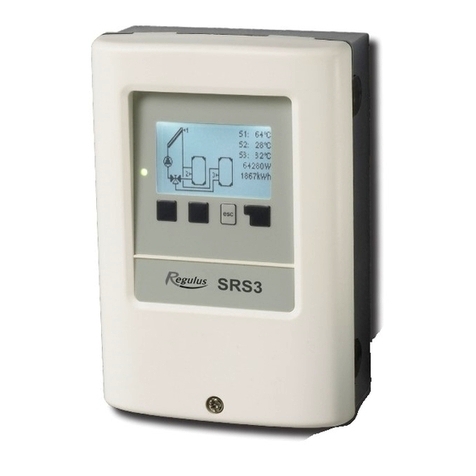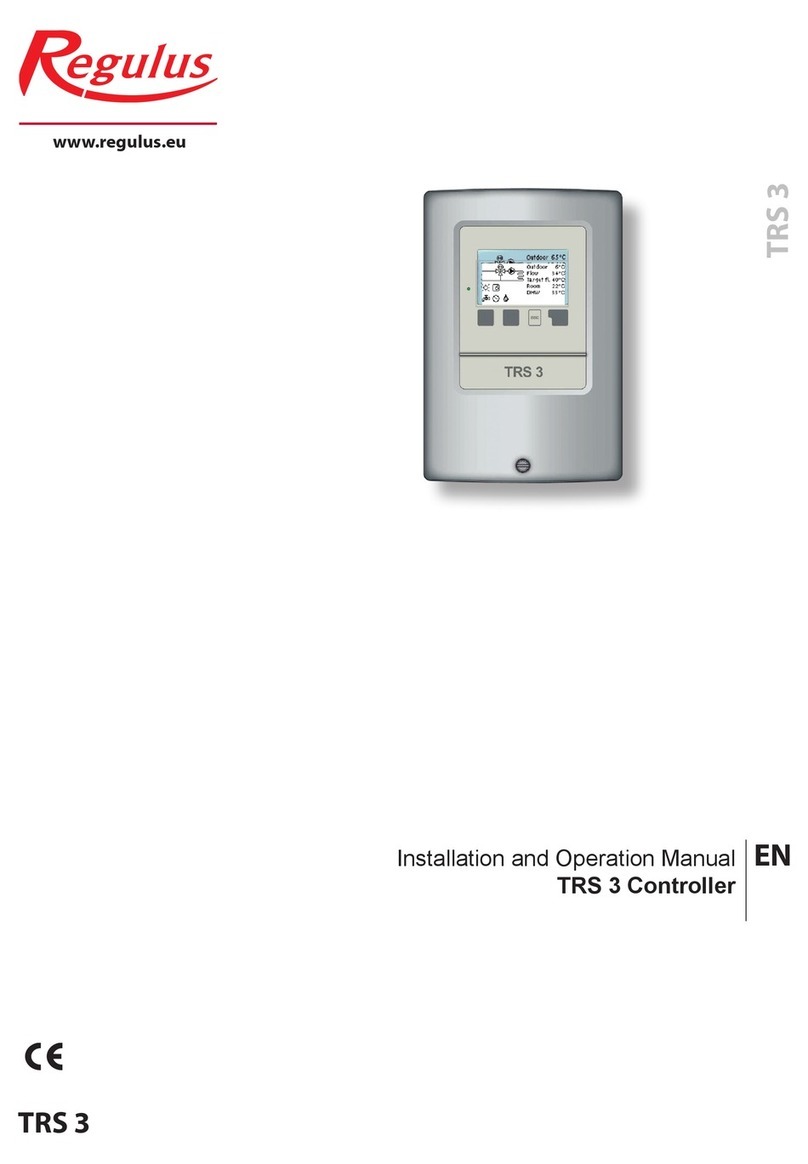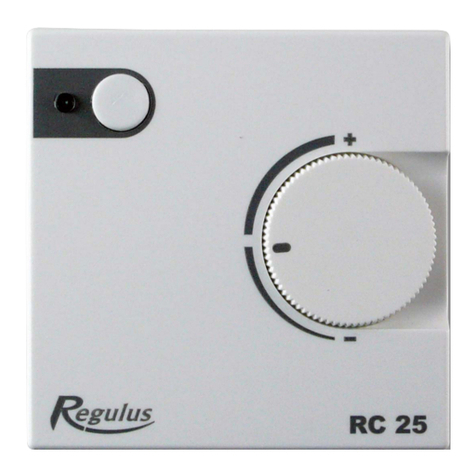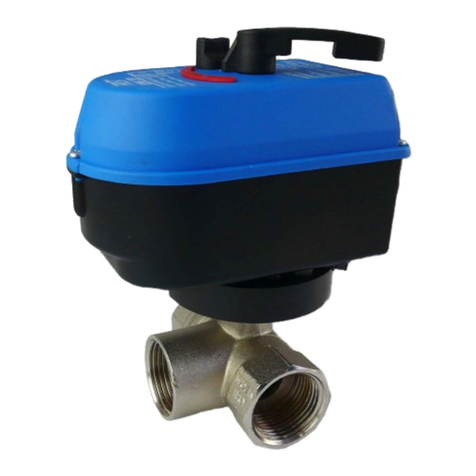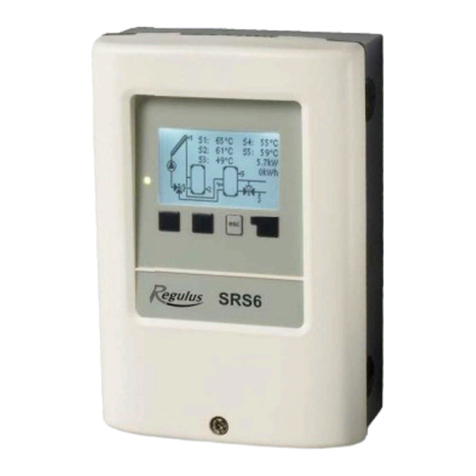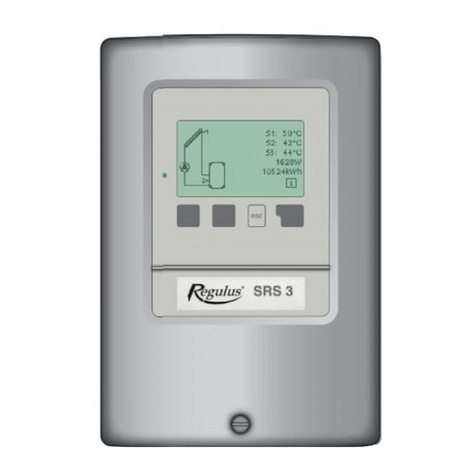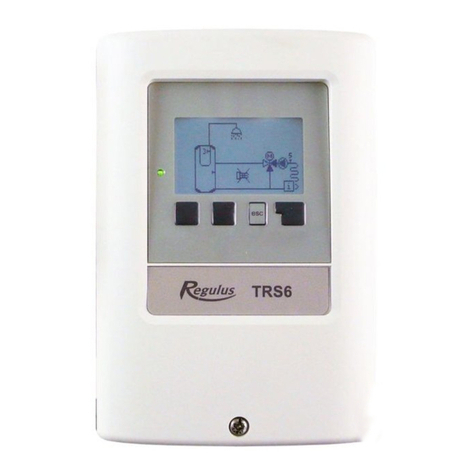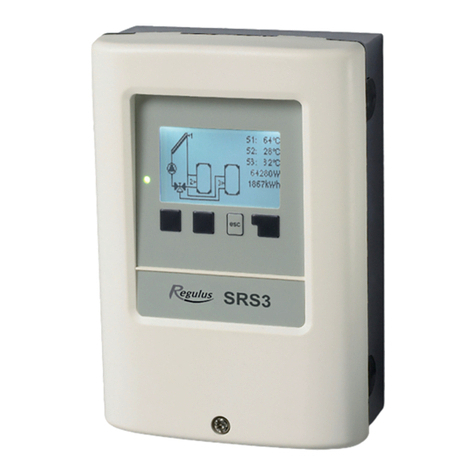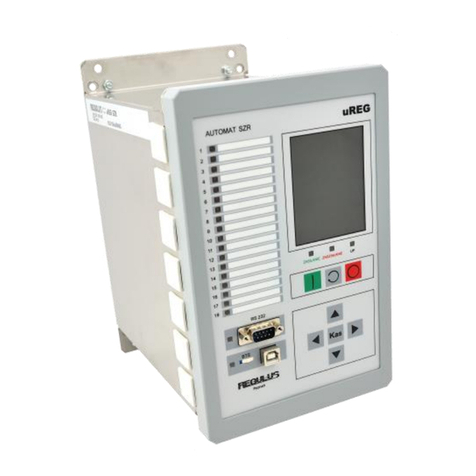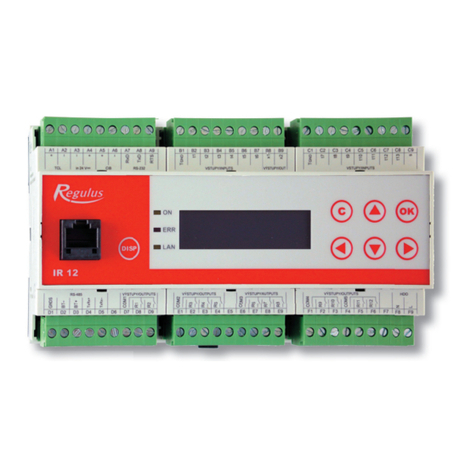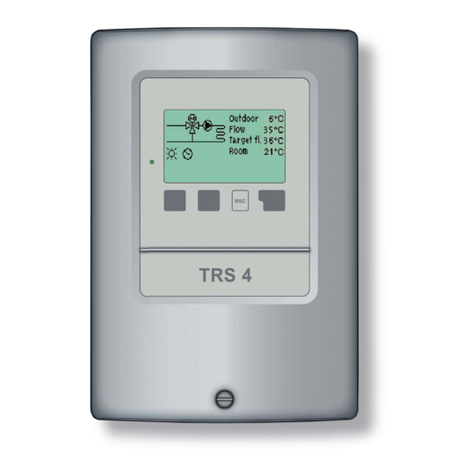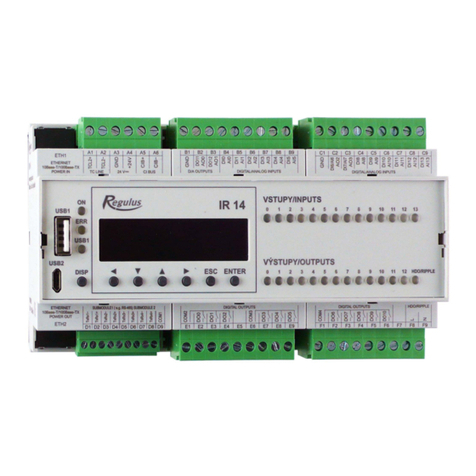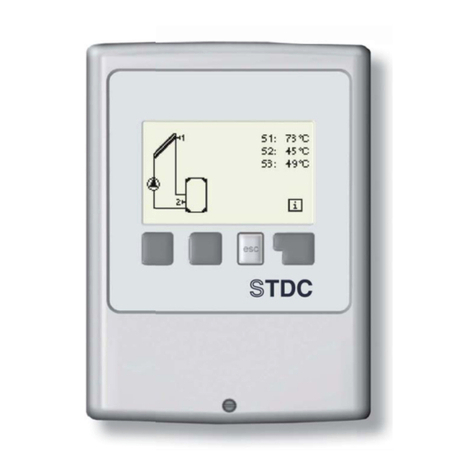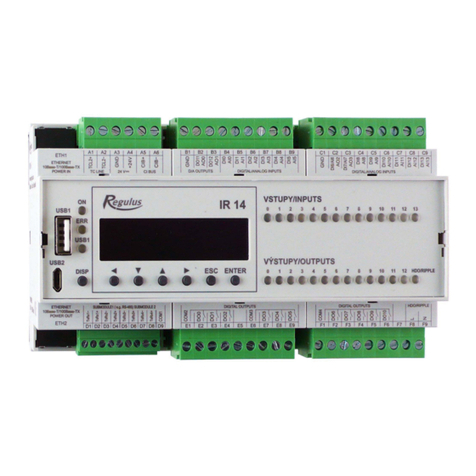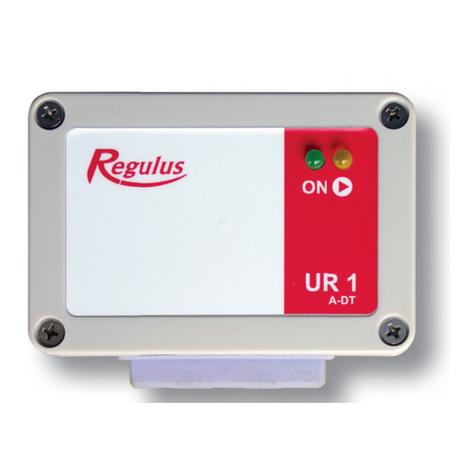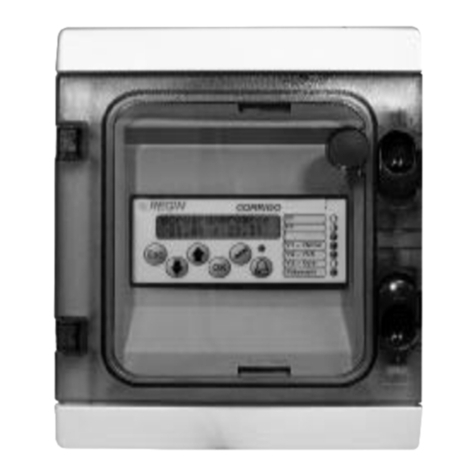
CONTENTS
A.1 EC Declaration of Conformity 4
A.2 General information 4
A.3 Explanation of symbols 4
A.4 Changes to the unit 5
B.1 Specification 6
B.2 Temperature resistance table for
Pt1000 sensors 6
B.3 Description 7
B.4 Scope of supply 7
B.5 Disposal 7
B.6 Hydraulic variants 8
C.1 Wall installation 9
C.2 Electrical wiring 10
C.3 Installing the temperature sensors 11
D.1 Terminal block wiring 12
D.2 Example of el. heating element wiring 13
E.1 Display and input 14
E.2 Commissioning help 15
E.3 Free commissioning 15
E.4 Menu sequence and menu structure 16
1. - Measurements 17
2. - Statistics 18
2.1. - Operating hours 18
2.2. - Heat quantity 18
2.3. - Graphic overview 18
2.4. - Error log 18
2.5. - Reset / Clear 18
3. - Operating modes 19
3.1. - Auto 19
3.2. - Manual 19
3.3. - OFF 19
4. - Settings 20
4.1. - Tmin S(X) 20
4.4. - ΔT Solar S(X) 20
4.5. - Tmax S(X) 21
4.14. - Auxiliary heat source 22
4.14.1. - TH Set 22
4.14.2. - Hysteresis 22
4.14.3. - Aux. heat source sensor 1 22
4.14.4. - Aux. heat source sensor 2 22
4.14.5. - T eco 22
4.14.6. - Energy saving mode 22
4.14.7. - Periods 23
4.15. - Recirculation 23
4.15.1. - Min. set temperature 23
4.15.2. - Hysteresis 23
4.15.7. - Recirculation time programs 23
5. - Protective functions 24
5.1. - Anti Legionella 24
5.2. - System protection 25
5.3. - Collector protection 25
5.4. - Recooling 25
5.5. - Frost protection 26
5.6. - Seizing protection 26
5.7. - Collector alarm 26
6. - Special functions 27
6.1. - Program selections 27
6.2. - Pump settings V1 27
6.2.1. - Type of pump 27
6.2.2. - Pump 27
6.2.3. - Output Signal 28
6.2.4. - PWM Off / 0-10V Off 28
6.2.5. - PWM On / 0-10V On 28
6.2.6. - PWM Max/ 0-10V Max 28
6.2.7. - Show signal 28
6.3. - Speed control R1 29
6.3.1. - Modes R1 29
6.3.2. - Purging time 29
6.3.3. - Sweep time 29
6.3.4. - Max. speed 30
6.3.5. - Min. speed 30
6.3.6. - Setpoint 30
6.3.7. - Temperature difference 30
6.7. - Heat quantity 30
6.7.1. - Heat metering 30
6.7.5. - Antifreeze type 30
6.7.6. - Glycol percentage 31
6.7.7. - Flow r ate 31
6.7.9. - ΔT Offset 31
6.8. - Sensor calibration 31
6.9. - Commissioning 31
6.10. - Factory settings 31
6.11. - Start aid function 32
6.12. - Time and date 32
6.13. - Daylight saving time 32
6.14. - Sleep mode 32
6.15. - Temperature unit 32
7. - Menu lock 33
8. - Service values 34
9. - Language 35
Z.1 Malfunctions with error messages 36
Z.2 Replacing the fuse 37
Z.3 Maintenance 37
Useful hints and tricks 38

